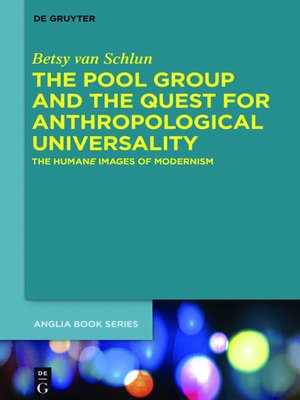The Pool Group and the Quest for Anthropological Universality
ebook ∣ The Humane Images of Modernism · Buchreihe der Anglia / Anglia Book Series
By Betsy van Schlun

Sign up to save your library
With an OverDrive account, you can save your favorite libraries for at-a-glance information about availability. Find out more about OverDrive accounts.
Find this title in Libby, the library reading app by OverDrive.



Search for a digital library with this title
Title found at these libraries:
| Library Name | Distance |
|---|---|
| Loading... |
Pool was an avant-garde group that originated in 1927 in Britain and was active under this name until 1933. The group consisted of the well-known modernist poet H.D., the English writer Bryher, and the young Scottish writer and artist Kenneth Macpherson. All three were first and foremost writers, who at one point discovered film as another modern, experimental medium of artistic expression. Pool associated with almost all the iconic modernists of their time, with Ezra Pound, Gertrude Stein, Ernest Hemmingway, James Joyce, Marianne Moore, William Carlos Williams, T.S. Eliot, and Virginia Woolf, to name only a few. In addition, due to their interest in film, they were also befriended with such influential filmmakers as Sergei Eisenstein and Georg Wilhelm Pabst, and became closely associated with Weimar Berlin film culture.
Pool unites classical Modernism and modernity, two directions that are usually considered to be contradictory. The Pool phenomenon opens a new perspective onto Modernism and prompts a reconsideration of its canonical texts and figures. Contrary to many artists of Modernism, who devised highly individualistic aesthetic styles, the artists of Pool strove towards a universal art of humanity that was rooted in all-human nature and psychology.






